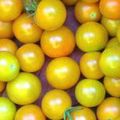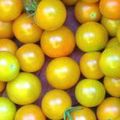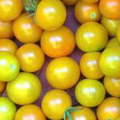Thank you for your support!

Reviving Folk Vitality in the Modern World. Video, Podcast and Blog with vital information on living holistically- from a traditional, conservative, feminine and primal perspective.
Subscription Tiers
$1
USD monthly

Tips
Limited (1 out of 50) subscriptions
$5
USD monthly

Tips
Thank you for your support!
$10
USD monthly

Tips
Thank you for your support!!
Welcome
- Blog posts, videos, recipes, and podcasts. Topics include: homesteading, child rearing, spirituality, herbalism, nutrition, and more!

See something you like? Subscribe to see even more!
HearthandHelm
Mar 27, 2022 05:16 pm
Public post
My experiences and methods for growing potatoes...
I recently produced a recording of this raw, unedited article. You may listen to the attached mp3.
Hello everyone! I hope you are all doing well and enjoying the warm spring sunshine. We have been loving the fresh new bird song and getting our hands in the dirt. It is almost time for us to plant potatoes here in southern Indiana. Potatoes are one of the easiest, and most rewarding crops to grow. There are a few different methods, but the basis is the same:
A piece of potato, which contains an eye (the place where a sprout grows out of the spud), is planted under soil or mulch, and a few months later, the plant has produced several new potatoes under the soil or mulch.
One of the reasons I love growing potatoes is that they are clones of the parent plant. So as long as you can store *some* of your home grown crop through the winter to planting time, you will never have to buy potatoes, or new “seed potatoes” to plant. Another great thing about potatoes is that they can be grown in almost any soil, even soil that is lacking in fertility.
Potatoes grown for food are planted from pieces of tubers. Potatoes are sometimes raised from true seeds, but that is not common or necessary, nor will it be the method I discuss today. Potatoes are not the same genus or species as sweet potatoes and they are grown differently than sweet potatoes. See our post for information on growing sweet potatoes.
Consider whether you'll grow early, mid, or late season potatoes, or all three. Late potatoes will be best for storing, early potatoes best for your summer potato salads.
You can purchase potatoes for planting from a local farm supply store, however the varieties are usually limited to just three. This is a fine way to start out. Usually you'll see red pontiac, kennebec, and Yukon Gold for sale this time of year at farm supply stores. This year we are planting Kennebec and Red Pontiac, which I purchased from a local store. My local store was out of stock in the Yukon Gold.
However, I ordered Purple Viking potatoes and Yukon Golds online from Gurneys. A couple of other companies that sell “seed” potatoes online are Fedco and Johnny’s. You can do a google search for other, lesser known, seed companies that may have interesting varieties for sale. Unfortunately, it’s much more expensive to order online (compared to purchasing at a local “tractor supply” store), so I just bought a couple pounds of each. My plan is to grow them explicitly for expanding our stock for next year.
It is important to purchase or acquire potatoes that have been raised for planting. Store-bought potatoes are often treated with fungicides and sprout- inhibitors.
We continue to see skyrocketing prices for gas and food. These are wild times in the West and sometimes it feels as though everything is very fragile and the pipe could burst at any moment. Even if the pipe doesn't hypothetically burst in our lifetime, we know the trajectory and we worry about our children's future. Make no mistake, we will win. However, the battle may be long. In the mean time, we may benefit in more than one way when we grow our own food and teach our children to do the same.
Regardless of your reasons for growing your own food, there is also a spiritual thing that happens, I think, when we are doing something for ourselves, to gain even an inch at a time of independence from a system that hates us. There is a connection to our ancestors with growing potatoes, too. In The Resilient Gardener, Carol Deppe writes: “In pre-potato famine Ireland… the average Irishman ate 13 pounds of potatoes per day in autumn and early winter (4500 calories and 120 grams of protein). Women and children averaged about 9 pounds of potatoes, for 3100 calories and 80 grams of protein per day. It is clear that, for physically active people, an all potato diet can provide all the calories and all the protein they need. These amounts of potatoes provide all of the vitamin C a person needs.”
While many of us today are trying not to eat too many carbs, one has to wonder if carbs are really the culprit. While no one would necessarily enjoy a 100% potato- only diet, these numbers are staggering. These numbers can also give you a rough idea of how many potatoes you would like to grow. One plant can produce around 2 to 5 pounds.
Potatoes are truly amazing as a survival garden food. There are also stories during times of war, where people survived on potatoes that were hidden under the soil, right where they had grown, to the eyes of enemy armies passing through and robbing farmers of their stored crops. Indeed, potatoes can stay in the ground for a long time and still be edible.
I have talked a lot on Hearth & Helm about “mulch” being the gardener’s best friend. I always include the disclaimer that I am not referring to expensive bark hardwood mulch sold at landscape yards.I am talking about anything and everything that you can use as a mulch. This means hay, straw, autumn leaves, or grass clippings. aged or fresh wood chips from tree companies is another source.
Mulch is the backbone of our gardening here at home. In past posts I have discussed how we use chickens and mulch together to create and maintain our gardens. See our post here for more information.
Today I am going to explain a few methods for growing potatoes. These are methods that we have used.
The first method uses mulch.
This is our favorite method, and the one that we have used for several years. However, I have a few comments to add.
In The No Work Garden book, Ruth Stout writes:
“Large crops of the highest quality potatoes can be grown by laying the seed (preferably small whole potatoes) on top of remains of last years mulch. I make double rows, fourteen inches a part, with the seed the same distance apart in the rows. The idea of this is not only to get a heavy yield, but to make it easy to inspect the vines from both sides occasionally, and to take care of a rare potato bug, or a bunch of eggs that the ladybugs have missed. Having laid the seed in straight rows with the aid of a string, I cover the rows with six or eight inches of hay, and do nothing more until several weeks later. After the blossoms fall, I begin moving the hay carefully to see how things are progressing. Small potatoes an inch or two in diameter can be separated from their stems without disturbing the parent plants, and the hay then replaced. What these small potatoes taste like is something that no reader of this book should need to be told. The yield in pounds is reduced, of course, but the returns in satisfaction are maximized.”
So, yes, this method that Ruth describes is the one that we tend to use now, year after year. It is back-saving in that you do not have to “hill” the potatoes, another method I will discuss later.
You can use this method even if you do not have “last year’s mulch” to lay the spuds onto. You can actually use this method right on top of existing sod! We have done this. You mow the sod (lawn/grass) down as close to the ground as possible. Lay your spud pieces on the sod, and cover everything up with a very thick mulch (usually hay or straw at least 8 inches thick).
However, this method takes A LOT of mulch. You absolutely must not skimp on the mulch, or you will be fighting weeds all year long. The idea of this method is that the new potatoes form under the mulch. It can be successful, and honestly in our experience, the yield is not less than traditional “hilled” potatoes. The mulch also needs to be thick enough to keep out the sunlight, and suppress weed growth.
Last year I learned two great lessons using this method. One, do not skimp on the mulch. The importance cannot be overstated. I disagree with Ruth that 6 to 8 inches is enough. Partly because measuring the depth of hay mulch is subjective. I thought I had plenty of mulch on my potatoes and was sad to find that some areas of my potato patch were not as heavily mulched as others, and some of them had turned green. Also the wind had blown a good bit of my mulch around.
The other lesson I learned is that you should not use whole, small potatoes for planting, nor should you use large pieces of potatoes with too many eyes. There is a reason that the gardening books of old say to cut up your potatoes. Using a large piece of potato, or a whole potato for planting, might seem like a good idea, (thinking it would give the new little plant fuel for starting) however less is more in this case.
In the book I mentioned earlier, The Resilient Gardener, author Carol Deppe addresses the issue of a too large potato or whole potato rotting under the soil, which can spread to the newly developing potatoes. Last summer was particularly rainy here and combined with the fact that I had used whole spuds in some places, I saw a sad amount of my potatoes rot under the soil. While I still had a decent sized harvest, I will not repeat this mistake again.
I am still going to use this mulching method, but I will be adapting it a bit this year. I am going to plant in long, double rows with wide, grassy paths in between the rows. I will keep the grass paths mowed with my lawnmower.
The reason for this is that in the past, instead of long rows, we had a large square patch for the potatoes, and would lay the spud pieces down, and then layer the hay mulch on top of the entire patch. Hay is a precious resource and using that method simply used up WAY too much hay, causing me to have to skimp on the amount of hay actually covering the planted spud pieces.
With the method I’ll be doing this year, I can utilize larger amounts of hay on the actual potato rows, and the kids and I can keep the grass paths mowed.
One bonus to using the mulch method is the control of moisture. We rarely, if ever, have to irrigate our potatoes. Also, anytime you are adding organic matter to the soil, in this case hay or straw, it will ultimately benefit the soil.
On to the next method of growing potatoes.
The traditional, hilled potato method. This method is also very good, but different. It can be a good method if you tend to have waterlogged or heavy clay soil. Dig a trench in a weed free area, plant your pieces of spuds about 4 inches deep and cover with soil. Once the plants emerge and are a couple of inches tall, “hill” the soil over the plants leaving just a tiny bit exposed. Let them grow up and out of that soil a few more inches, and then HILL again. Each time, leaving just a tip of the plant exposed. You will wind up with rows of hilled potatoes, with the new tubers developing above ground level, but underneath the soil.
Pros to this method are: It’s great exercise, yields may be higher, and developing spuds are kept a bit dryer if you are gardening in a wet area.
Cons are that during a drought, you might need to irrigate. It is also a lot of physical work. In a survival situation you will need to preserve your energy. Exposed soil contributes to prolific growth of weeds and/or loss of soil vitality.
The third method I will describe, is one that is sort of a combination of the other two. You dig a trench, plant your spud pieces, and cover with soil, once the plants are about 4 inches tall, you cover them with about 8 inches of mulch such as straw or hay. According to Maine gardener, Eliot Coleman, something about this particular method decreases the likelihood of a potato beetle infestation. The potatoes still develop under soil, vs. under mulch, so you don’t have to worry about exposure to light. The mulch prevents weeds from coming up and helps control moisture. The initial trenching is a bit of work, but the yields may still be slightly higher that the “Ruth Stout” method.
Regardless of which method you choose, make sure to start with quality potatoes for planting. As I mentioned earlier, you can purchase them online or from a garden supply store. Ideally, you can plant the potatoes you grew last year. Choose the method you want to use, acquire the potatoes, and once you are ready to plant- cut the potatoes into pieces that each have one to two “eyes”. But not more than two. This is another thing I recently learned.
Contrary to popular belief, you do not want to intentionally sprout your potatoes first. The sprouts will be weak plants. You do not need sprouts to plant. Just a little tiny eye bud. Make sure to plant your pieces with “eyes to the sky” before covering them with dirt of mulch. If you cut into a potato and it is diseased, rotten or green, get rid of it.
Unfortunately, due to produce storage issues here at our place, we have had to purchase new potatoes for planting each year. The price has gone up so much this year, that I swear to find a way to store my spuds this year. I don’t ever want to have to buy seed potatoes again. Brown paper bags are great for storage and they keep out the light. Potatoes need to be stored at just above freezing, at about 34 degrees and in this way they can be kept for many, many months. Certainly long enough to tide you over to next years planting time. An attached garage or a cold spot in a basement would be great.
You will be able to carefully harvest a few “new” or early summer small potatoes before the plant is done (see photo below). The final harvest will come when the plants start turning brown and dying back. Potatoes should be handled gently, harvested in dry weather if possible, and stored with the dirt still on them.
Potatoes can also be grown in containers. The methods I mentioned can be done on a micro scale in large pots or barrels, however, make sure that the containers have good drainage holes in the bottom. You will also need to water the plants regularly, as containers dry out much more quickly.
Spuds.mp3
Like(0)
Dislike(0)
Sign Up or Log In to comment on this post
See something you like? Subscribe to see even more!
The subscription gives you:
- Access to Star's profile content.
- Ability to support your Star by pledging – one-time or recurring.
- Means to reaching out to the Star directly via Instant Messenger.





